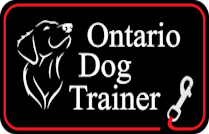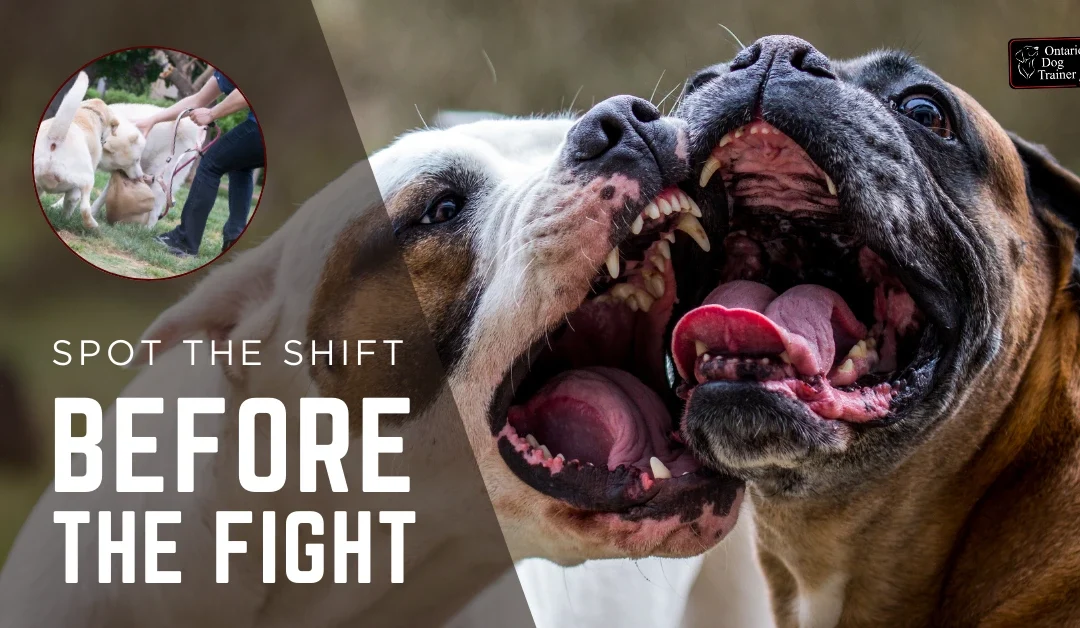Do You Really Know What Dog Play Looks Like?
You’re standing in your backyard. The dogs are running, chasing, wrestling. It’s loud, it’s fast, but it all looks like fun—until it doesn’t.
One sharp yelp. A shift in posture. Suddenly, one dog is pinning the other. Teeth are flashing. You freeze. Or maybe you yell. Either way, it’s too late. The fight is on.
The truth is, dog play isn’t always what it seems. And if you’re not trained to notice the signs, you’ll miss that critical moment where fun turns into a fight. This blog isn’t about scaring you—it’s about equipping you. Because knowing the difference between healthy play and rising conflict can save your dog from injury—and you from panic.
A Real Story: Clover and Prince
What started as playful zoomies between Clover and Prince—two dogs who know and trust each other—turned into a heart-stopping moment. They’ve played this chasing game a hundred times, but this time, Clover clipped her shoulder on the edge of the porch. The moment of pain shifted her energy. She went from playful to stressed in a heartbeat.
This wasn’t one of those mystery moments where a fight “came out of nowhere.” It came from a visible, physical trigger—and a sudden change in body language that could have been missed if no one was paying attention.
Dog dynamics can flip fast. And that’s exactly what happened here.
🎥 Watch how it played out in real time on YouTube: Click here to watch the video. It’s a valuable example of how quickly things can go sideways—and what to look for so you’re not caught off guard.
What Is Dog Play, Really?
Let’s start by redefining the term. Real dog play is not just about two dogs running around or body-slamming each other. Good play follows a few key rules:
- It’s mutual. Both dogs are willingly engaging.
- It’s balanced. They switch roles—chaser becomes chased, top becomes bottom.
- It’s self-handicapped. The bigger or stronger dog pulls their punches.
- It has pauses. Dogs break away, check in, and choose to continue.
If these elements are missing? It’s not play—it’s either one-sided bullying, stress behavior, or something heading toward conflict.
Signs That Dog Play Is Going Off the Rails
Here’s where things get real. Watch your dogs and look for the shift. Dog play can flip quickly when one of these red flags shows up:
1. Change in Vocalization
- Play growling is low, rhythmic, and consistent.
- If it turns high-pitched, sharp, or frantic, it’s not play anymore.
2. Sudden Stillness
- Play has movement.
- If one dog suddenly freezes or stiffens, something just changed.
3. Escalating Speed or Intensity
- Play that speeds up dramatically is often on the verge of a breakdown.
- Look for wild eyes, hackles up, or over-arousal.
4. One Dog Trying to Get Away
- If one dog is constantly retreating or hiding, and the other won’t back off, it’s no longer fun.
5. No Breaks or Role-Switching
- Healthy dog play has natural ebbs and flows.
- If one dog is always on top, always chasing, or never letting up, that’s a problem.
Why Dog Play Turns into a Fight
There are lots of reasons dog play can go sideways:
Pain or Injury
Like what happened with Clover—one bang on the porch, and her whole mood changed. Pain can flip a dog into defense mode instantly.
Overstimulation
Dogs can get flooded. Excitement builds, and before they know it, they’ve tipped into aggression. It’s not always intentional, but it’s very real.
Mismatched Energy Levels
A high-energy puppy trying to roughhouse with a senior dog is a recipe for disaster.
Lack of Social Skills
Some dogs just don’t know how to play. They didn’t learn bite inhibition, they don’t take turns, or they can’t read another dog’s signals.
Resource Guarding or Environmental Triggers
Dogs playing near toys, food, or small spaces like hallways or porches can suddenly shift if one feels cornered or challenged.
What To Do If You See the Shift
Here’s where the plan comes in. You must know what to do the second dog play crosses the line.
Step 1: Interrupt Early
- Don’t wait for a fight. Step in at the first sign of trouble.
- Use a loud clap, sharp verbal “Enough!”, or toss a light object nearby (never at the dogs).
Step 2: Separate Calmly and Safely
- Use a leash dragline on each dog so you don’t need to grab collars.
- Avoid putting your hands between dogs—redirect instead.
Step 3: Cool Down Period
- Each dog needs a reset.
- Crate them, tether them, or take them on a short walk apart.
Step 4: Observe Body Language
- After the break, let one dog back into the space. Watch the reaction.
- If tension returns? End it. They’re not ready to resume.
Tips to Keep Dog Play Safe
You can’t prevent every problem, but you can stack the deck in your favor:
- Match dogs based on size, energy, and play style.
- Supervise all play—never assume it’s safe because it “always has been.”
- Avoid high-arousal settings like doorways, stairs, and tight corners.
- Don’t allow dogs to play around food, treats, or toys unless they have zero history of guarding.
- Learn your dog’s body language like your own face in the mirror.
Why This Matters (And Why It’s on You)
Dog fights are scary. They’re loud, fast, and can end with injuries—or worse. But they rarely happen out of the blue. If you learn to see dog play for what it really is—a communication system—you’ll notice when the message changes.
Your job isn’t just to watch—it’s to read the room. Intervene early. Give breaks. Match partners wisely. And above all, don’t wait for a bite to confirm your instincts.
Sometimes all it takes is a bump on the porch, like with Clover. One moment of pain, and her game with Prince was over. But because I was watching, and I knew what I was seeing, it didn’t turn into something worse.
Dog dynamics shift fast. But so can your response—if you’ve got the plan.
🎥 And if you haven’t already, watch the full video of Clover and Prince’s moment on YouTube to see exactly how fast dog play can flip — and what body language to look for. It’s a must-watch for anyone managing multi-dog play. Watch it below.
Enjoyed this read? For more no-nonsense insights on dog training and behavior, check out my earlier blogs:
Tick-Borne Diseases in Dogs: What Every Dog Owner Needs to Know
Teaching Your Reactive Dog to Stay Calm: The Art of Doing Nothing
How to Approach a Dog Without Causing Chaos
There’s always something new to learn, even if it’s just a different perspective on the everyday challenges we face. Happy reading!
Join my Email List to get frequent updates, free downloadables, and dog training tips! Click here to subscribe.
Get the latest updates when we publish new freebies and guides by signing up. Your dog will thank you, and you’ll be the first to know when new gifts are available!
Let’s stay connected:

